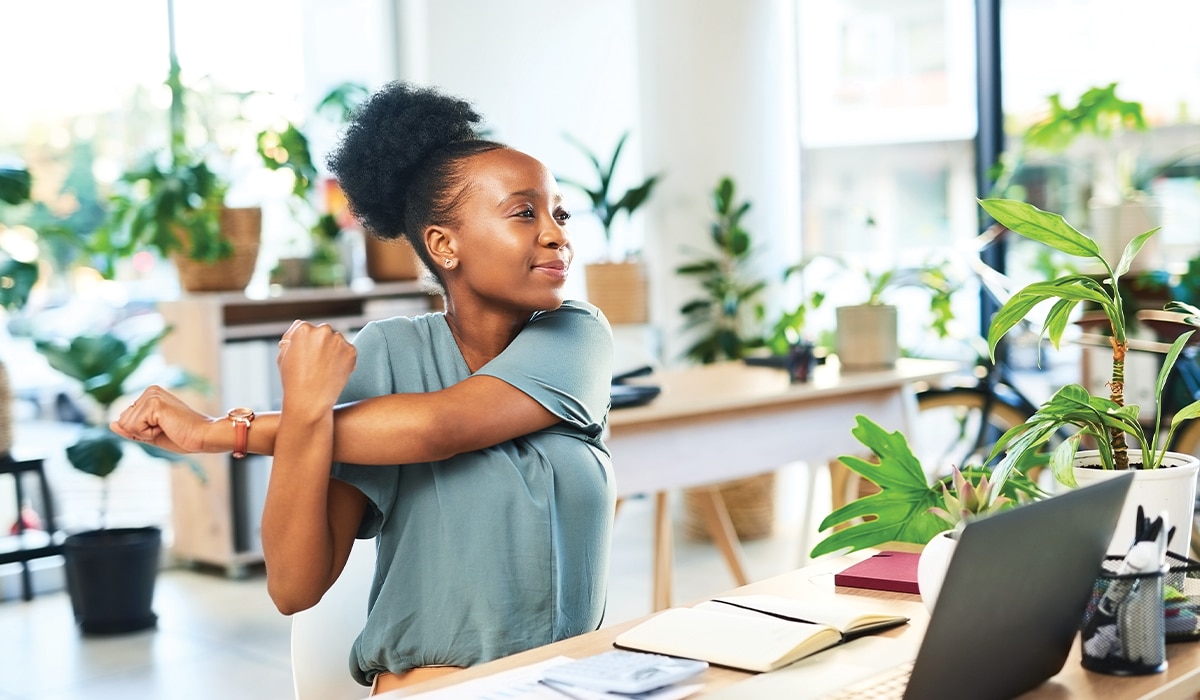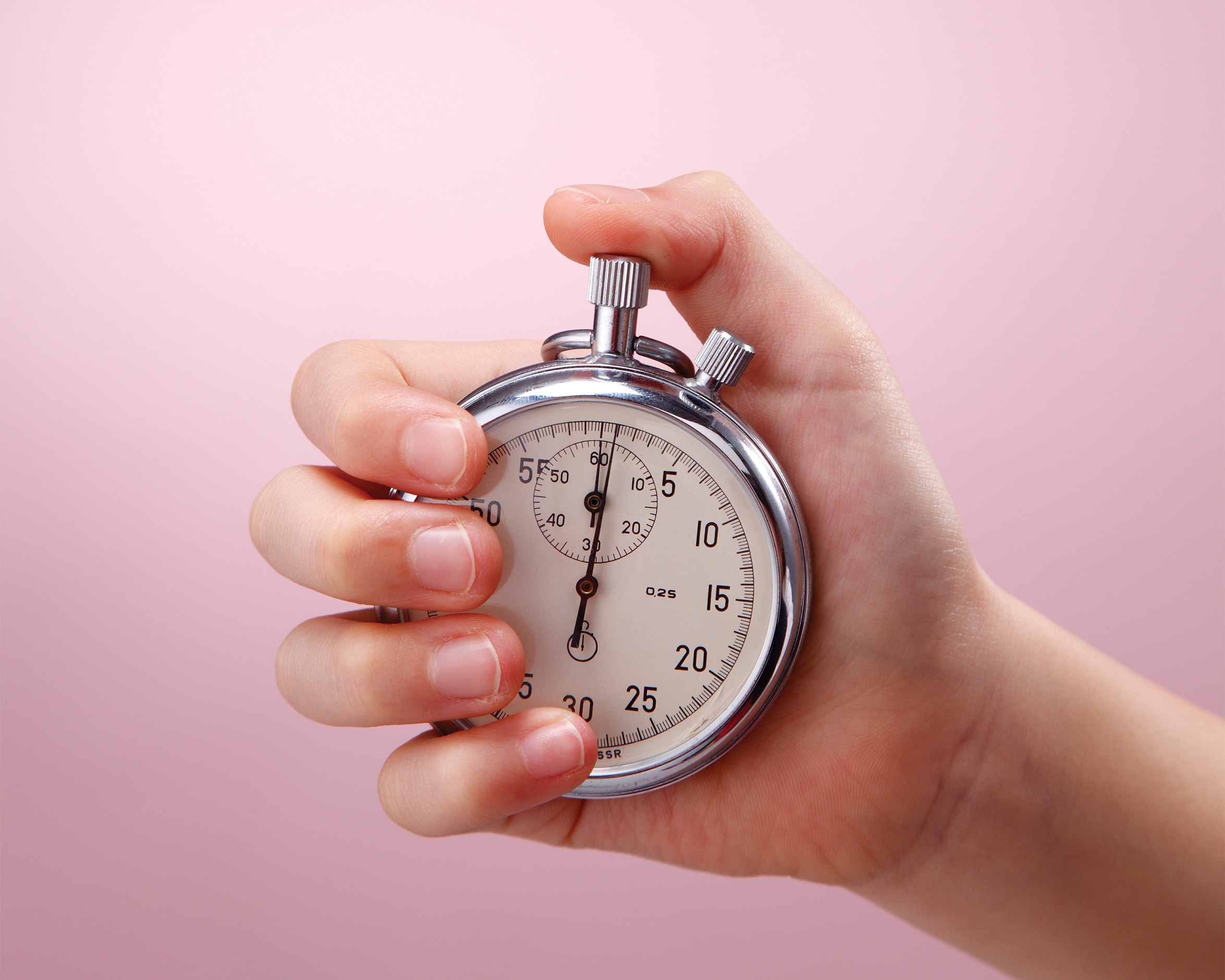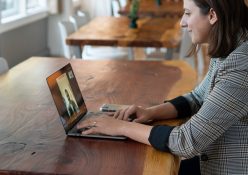Slash your risk for obesity, back pain and eye problems with these clever on-the-job health checks.
DON’T BE A SITTING DUCK
Sitting at a desk for hours on end places more stress on your back than standing, says specialist musculoskeletal physiotherapist Andrew Dalwood. “To put sitting in perspective. When you stand, each disc in your back supports 100kg of pressure on average, while when sitting, each disc has to tolerate between 140kg of pressure, even in a good posture. In a slouched position, however, pressure can increase to almost 185kg, which is equal to standing up and bending forward or washing your face in a sink all day,” he says.
Dalwood explains that slouching, along with incorrectly using a computer mouse (tip: keep it close to your fingertips to avoid overreaching), can lead to nagging back and neck pain. He suggests looking for opportunities to stand, such as when you’re on the phone. He also urges people to walk to the office next door rather than email. “The spine likes movement,” he says.
TRY DALWOOD’S ONE-MINUTE SIT-UP
Bring your chair closer to your desk so you are sitting straight, also reducing the reach of your arms. Make sure your feet aren’t dangling – use a footrest if you need to. If you’re wearing high heels, this will change the height of your thighs, so ensure that the backs of your knees are at least three fingers away from the front edge of the chair to allow for circulation.
The base of your chair should be tilted slightly forward so your hips are higher than your knees, and the centre of the chair’s back support should be in the small curve of the lower back. Gently bring your shoulders backwards, tuck in your chin and think tall, or imagine you are lifting the crown of your head to the roof.

KNOW YOUR EYE-Q
“If you’re staring at a screen for six to eight hours a day, do not underestimate the strain you’re placing on your eyes,” says optometrist Jared Slater. “The normal blink rate is 10 to 15 times a minute.
However, when you’re staring at a fixed object like a computer, your blink rate can reduce by 50%. This means less lubrication, which can lead to dry-eye symptoms such as burning, irritation, redness and blurry vision,” he says.
TRY SLATER’S ONE-MINUTE EYE CHECK
Make an effort to consciously blink more often at your desk, and take a mini-break from your screen every 30 minutes. If you don’t have time to leave your desk, give your eyes a break by looking out the window or at something at the far end of the office.
Place your screen at a comfortable distance from your eyes and ensure that you’re looking straight ahead, rather than up or down. Good lighting is also important, so aim to position yourself where there’s reduced glare from the sun or overhead lights.
‘EVERY HOUR, TAKE A MINUTE TO STAND UP AND STRETCH.’
PALM OFF WRIST PAIN
3 If you spend a lot of time working at your computer, make sure you reduce your risk of Occupational Overuse Syndrome (OOS, formerly known as Repetitive Strain Injury) by giving your wrists a break from time to time. The early symptoms of OOS start off as tiredness in the forearm, progressing to achiness and heaviness in the arm.
There may also be sharp pains in and around the wrist, hand, fingers and elbow regions in the later stages, or an inability to do simple things like pick up a coffee cup. Carpal Tunnel Syndrome is a well-known example of OOS, caused by pressure on the median nerve in your wrists.
TRY DALWOOD’S ONE-MINUTE HAND ROUTINE
Every so often, stand up and place your palms on your desk. Press firmly for five seconds, then release and repeat five times. Gently grasping an object and then extending your fingers will also help, while rolling your shoulders back may also be useful for easing tension.
GET VERTICAL
We don’t sit only at our desks. Personal trainer Eliza Dawes also urges us to consider how much time we spend watching our favourite TV series and travelling to and from work in a car, bus or train. “All this sitting may contribute to a sedentary lifestyle, which can lead to obesity, muscle strain and cramps,” she says.
TRY DAWES’ ONE-MINUTE WALK-OUTS
Every hour, take a minute to stand up and stretch. Gently push your left palm towards the floor and tip your head to the right to stretch your neck, then do the same on the other side. Walk down a few flights of stairs to fill your water bottle or talk to someone on another floor. Do some push-ups against your desk, tap your feet as if you are running, sit down, or contract all your muscles, hold for a second or two, release and repeat a few times.
Words by Jane Worthington







